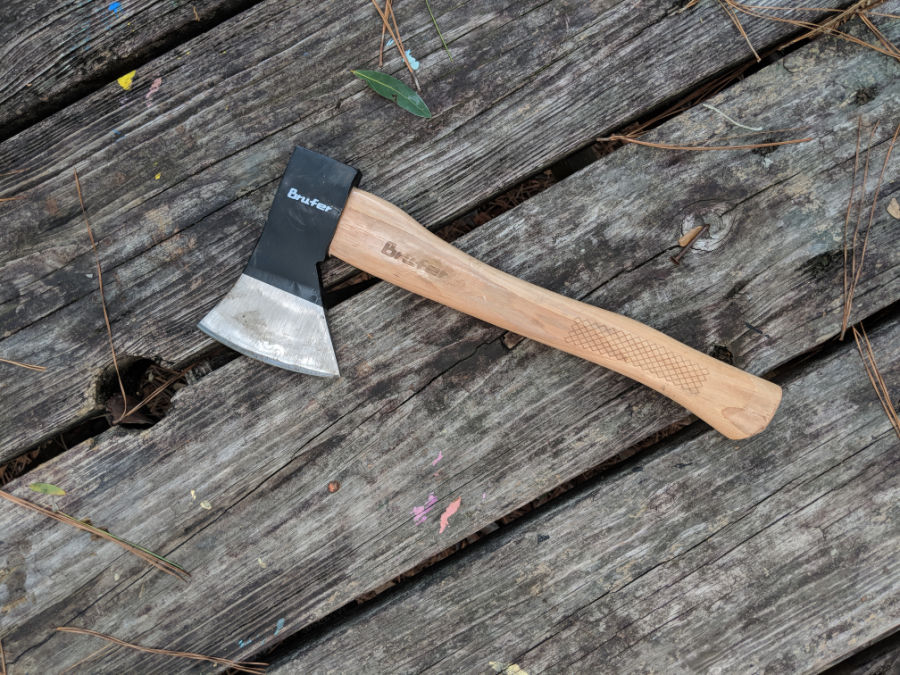What Can You Do With A Hatchet: The Versatile Tools That Enable My Outdoor Adventures
As an outdoor enthusiast with over 50 axes and hatchets in my collection, I’ve come to appreciate these compact chopping tools as some of the most versatile and valued pieces of equipment for both everyday tasks and wilderness adventures.
In my experience, a good hatchet is far more than just a small axe – it’s an indispensable companion that provides security, capability, and comfort whenever I’m camping, hiking, or even just working around the homestead.
I want to talk about the many uses of hatchets, from chopping firewood to constructing shelters. I’ve discovered innovative ways to apply my hatchets beyond their traditional woodcutting purpose. My goal is to inspire you to consider adding one or more of these adaptable tools to your own toolkit after learning just how much they’ve enhanced my self-reliance and preparation.
My Go-To Tool for Processing Firewood

As someone who frequently spends time in the woods far from electricity sources, keeping my campsite stocked with split firewood is an essential daily routine. I rely on my hatchets to quickly and efficiently convert felled logs and branches into ideal fuel for cooking fires and nighttime bonfires.
The short handle and concentrated weight of a hatchet allows me to swing and strike with focused precision compared to a full-sized axe. I’m able to chop logs into segments based on the size of my fire pit and use the sharp blade to “feather” kindling shavings off the sides. A few smooth swings easily splits logs along the grain into fire-ready pieces. I just make sure I’m chopping on a sturdy wood block to prevent dulling the blade on the dirt.
Hatchets require far less tiring overhead swings than a full axe to get the job done. I can chop efficiently for extended periods thanks to their lighter weight and shorter handle. When processing firewood in the field, my trusty hatchet is easily the fastest and most convenient tool for the job.
Constructing Rustic But Reliable Structures

I occasionally need to construct improvised shelters, furniture, and tools while camping in order to improve my quality of life in the wilderness. Though hatchets are most known for chopping, I’ve discovered their chopping blades also allow me to shape and fashion logs, branches, and lumber in highly controlled ways.
With targeted notching and pointing using the hatchet’s sharp bit, I can transform natural wood materials into sturdy poles, beams, stakes, and frames. I’ll admit it takes practice, but a proficient hatchet user can actually perform basic carpentry and wood joinery despite lacking power tools.
During an extended solo camping trip last summer, my hatchet was invaluable for clearing some small trees and saplings to make an open space for pitching my tarp shelter. I also improvised a log bench and small table for my camp kitchen that served me well for over two weeks.
Cutting Trails and Collecting Tinder
When navigating densely wooded areas, my hatchet allows me to clear a path efficiently and safely. Stubborn underbrush is no match for a few calculated chops to remove obstructing branches and vegetation. I can also use my hatchet to cleanly remove protruding roots and stones that pose tripping hazards from my trail.
In addition to clearing obstacles, my hatchet comes in handy for collecting fatwood and bark tinder as I hike. Good fire-starting materials are scarce in wet environments, so I’ll occasionally chop into old stumps and logs to expose the dry, resin-rich fatwood inside. The hatchet’s concentrated chopping power gives me targeted control to expose just the amount of tinder I need for my next campfire.
Hunting and Gathering
While I try to pack enough food when venturing into the wilderness, my hatchet provides me with options for obtaining fresh meat and edible plants when needed. Small game like rabbits and squirrels can be humanely hunted with a well-aimed hatchet toss. I prefer this method because it doesn’t require carrying a firearm.
For vegetation, a hatchet allows me to dig up wild onions, knock down difficult-to-reach nuts and fruit, and strip edible bark from trees. I only harvest what I need for a meal or two, minimizing my impact on the natural environment. But it’s reassuring knowing my hatchet provides me with options if my packed food ever runs scarce.
An Ever-Ready Self-Defense Tool
Though I don’t seek out conflict, dangerous wildlife is a reality in many of the remote environments I explore. My hatchet serves as a constant companion I can rely on if I ever need to defend myself against a threatening predator.
Grizzly bears, wolves, and mountain lions usually avoid humans, but surprises occasionally happen. The last thing I want is to be left empty-handed if a dangerous animal becomes aggressive. My trusty hatchet stays close by when I’m sleeping in my shelter at night or if I’m field dressing a hunted animal.
Fortunately, I’ve never needed to actually swing my hatchet to protect myself. Just having it readily accessible provides me peace of mind and deterrence against attack. But if the situation ever arose, I’d be glad to have it available to potentially save my life.
Digging, Hammering, and Improvising
A hatchet’s usefulness extends far beyond just wood chopping. The poll end opposite the blade makes for an effective hammering surface whenever I need to drive stakes or smash apart bigger rocks. Hatchets also work remarkably well for light digging tasks like making cat holes or excavating dirt for fire pits and latrines.
In a pinch, I can get really creative with hatchets for improvising tools I may be lacking. The sturdy handle serves as a short pry bar, the blade can be used for scraping hides, and the whole tool applied as an emergency shovel. With 100+ hatchets in my collection, I’m constantly discovering new niche applications.
A Historical and Cultural Icon

Beyond their functionality, I’m fascinated by hatchets as icons throughout human history. They were crucial survival tools for pioneers venturing into the American wilderness and remain enshrined as ceremonial weapons for many Indigenous cultures. Events like lumberjack competitions and axe throwing leagues stem directly from the hatchet’s woodcutting heritage.
As a passionate outdoorsman, owning and using these historical tools connects me to the past and to nature itself. I feel a satisfying sense of self-reliance chopping wood by the fire or building a shelter with techniques passed down through generations. My trusty hatchet helps feed that primal need to carve out a life beyond society’s modern excesses and conveniences.
An Indispensable Addition to Your Kit
I hope my first-hand experiences reveal why a quality hatchet should be standard equipment for any outdoor enthusiast, homesteader, or survivalist. They put dependable chopping capability right in your hands whenever you need it. Whether you’re preparing a campfire, building a shelter, gathering food, or defending your life, a hatchet is there to enable the task.
Consider picking up a hatchet or two for yourself. Get accustomed to using them for daily jobs before taking them into the wilderness. With time, they’ll prove to be some of your most trusted and constantly reached for tools. I’m confident you’ll gain the same passion and appreciation that I have for these compact yet infinitely versatile choppers. Just be careful – it’s easy to become a collector once you realize how useful they can be!

Alan Dale is an experienced backpacker and adventure sports athlete who pays the bills by writing. Married with a small brood, Alan often has his kids in tow on many of his adventures. You can visit Alan here: https://siralandale.com/

